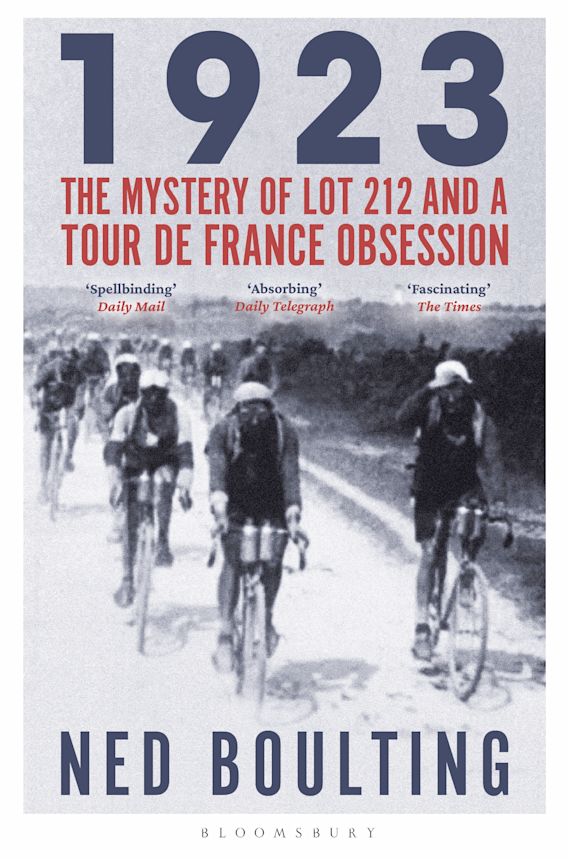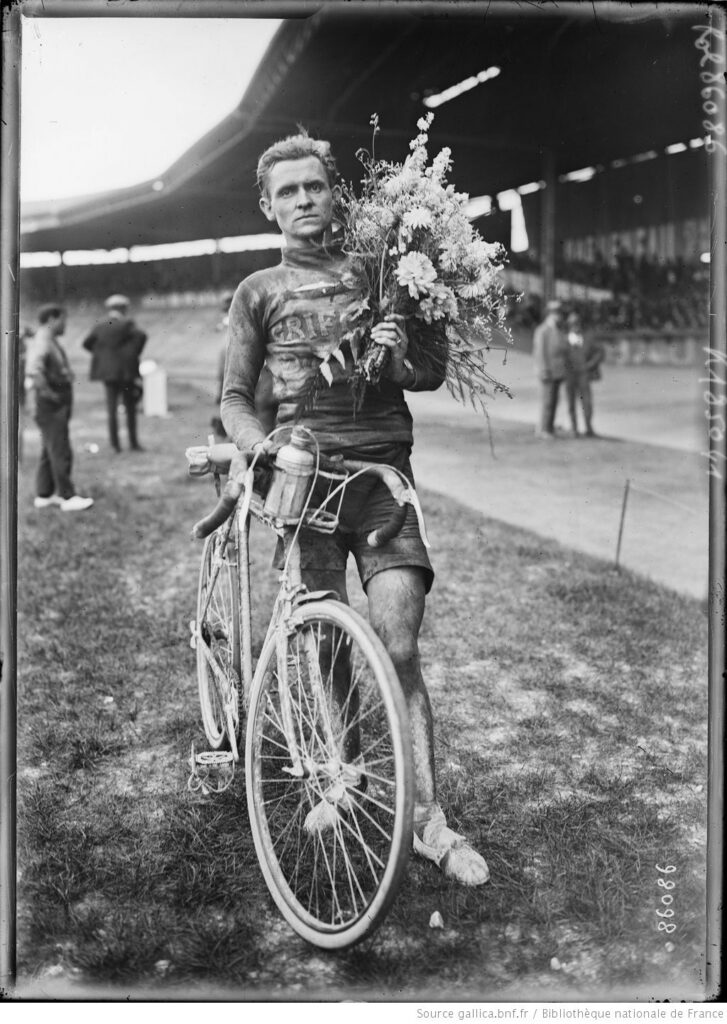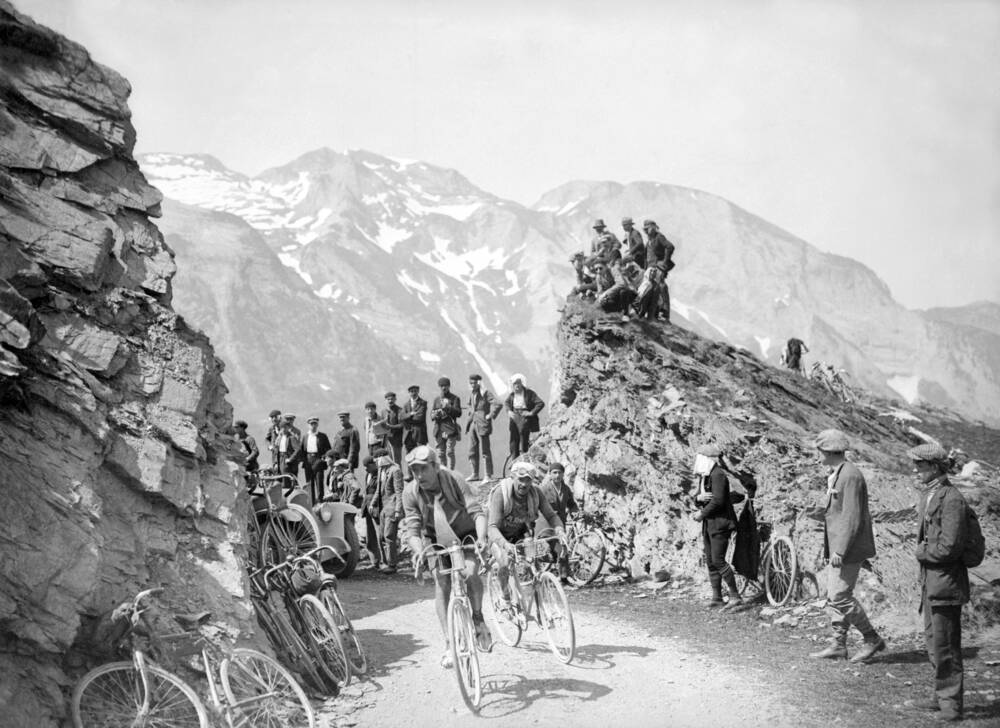
I’m not a cyclist by any means, but every year I get caught up in watching the Tour de France. I really enjoy looking at the countryside through go through, past castles and farms. I’m impressed by the stamina, especially knowing I could never come close to doing something like that. Still, I’m not entirely sure why I make sure to watch each summer.
And like the author of this book, I’m not entirely sure why I also became obsessed with learning about the people and places in a couple of minutes of century-old film.
Ned Boulting’s day job is as a British cycling sportscaster. He pours a incredible amount of time and effort into understanding the race world and the athletes. But when the world froze in 2020, Boulting had no outlet for this fastidious research or enthusiasm. On a whim, a friend sent him an auction listing for a scrap of silent film reel that was labelled Tour de France. He won Lot 212 and embarked on a three-year, multinational odyssey to preserve the film and restore it to its place in history, however small that might be.

Some digitising revealed the film to be a Pathé newsreel highlighting Stage 4 of the 1923 Tour de France. Newsreels were short movie clips that would be played before the main feature. these opening reels would give news updates, share clips from world travels, or even serialized adventures. These short films would be seen by hundreds of audiences for a week, or maybe two, before being replaced by the next newsreel and travelogue. Like so much from the silent film era, many of these movies have been lost (although Pathé has quite a solid archive).
Boulting, with little else to do during lockdowns and travel bans, pours over every detail in the clips and realizes one of the riders is Theophile Beeckman. Beeckman was a strong rider but never quite gained the legendary fame of others like the Pelessier brothers. Boulting researches every angle, every moment of the film. He reaches out to archives, historical societies and local gossips in search of tidbits that will make the movie more real.
I began instead to daydream about visiting Ninove. Though the pandemic would keep me at arm’s length for some time to come, Meerbeke, the humble district on the south side of the river Dender in Ninove, had become as totemic in my imagination as the bridge over the river Vilaine, where my film first affords a glimpse of Beeckman. … Deep down, I knew that being there, feeling the bite of a Flandrian wind, hear the actual traffic on the road and real Flemish voices talking into the mobile phones around me; there could be no substitute for that. ~Loc. 1482
This tracing of a person never met was enough to keep me engaged (after all, I buy old photos of people who are unknown) but Boulting also brings a richness of historical layers to the story. He explores the effects of WWI on small towns in France and Belgium, as well as the cycling athletes who served. He frames the horrors of the Ruhr Valley in a way that made the whole scenario so much more understandable to me.

Boutling also explored the differences in the present Tour de France to the one a hundred years ago. And honestly, as hard as it looks now, it sound absolutely miserable and mad in the 1920s.
This book is truly readable for anyone who likes a good wander down a rabbit hole. The reader need never have seen a moment of a cycle race to enjoy it — although it may make you want to tune in next year and raise a glass to the ones who rode before.
My thanks to Bloomsbury for the review copy. Read via NetGalley.
Publisher: Bloomsbury Sport (August 22, 2023)
Language: English
Hardcover: 288 pages
ISBN-10: 1399401548
